Bivalves
Bivalves or more correctly, Lamellibranchs, Pelicopods or just plain Clams, first show up in the lower Palaeozoic but are very rare. As competition from Brachiopods became less during the Mesozoic the fauna of Bivalves became much commoner and much more varied.
Bivalve Morphology
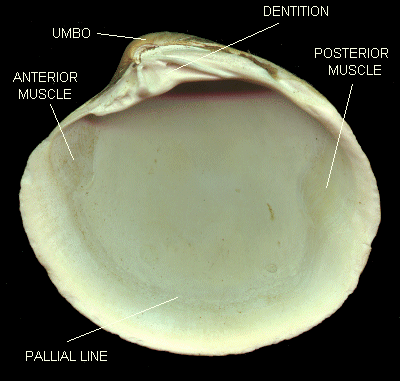
Although this is the general shape of a Bivalve, species varied enormously. One valve could be much larger, the umbones could curve to the left or right and the growth markings on the valves ( radial rings, grooves, marginal crenelation) makes identification of specific species a difficult task.
Below is a selection of Bivalves of various shapes and sizes from various locations.
This section contains -

Gryphaea arcuata.

This is one of the 'classics' from Lyme Regis. Nicknamed the 'Devils Toenail' : When fossils could not be explained by orthodox wisdom the locals believed that these were made as the Devil clipped his toenails. They are very numerous and easy to find. (Size 4cm)
The image below shows four specimens found within a hundred yards of each other on Monmouth Beach just to the west of Lyme. They are all obviously Gryphaea species but seem to vary between the shape of G. arcuata and G. dilobotes. They may, of course, just be variations within a single species.

 You usually find just the left valve (the curly bit) without the lid (right valve). I was really pleased to find one of the right valves. In most cases Bivalves have similarly shaped valves but Gryphaea has one valve much smaller than the other. Another bonus! This specimen also has the marks of a serpulid worm which encrusted the shell.
You usually find just the left valve (the curly bit) without the lid (right valve). I was really pleased to find one of the right valves. In most cases Bivalves have similarly shaped valves but Gryphaea has one valve much smaller than the other. Another bonus! This specimen also has the marks of a serpulid worm which encrusted the shell.

Burrowing Bivalve, Pholadomya
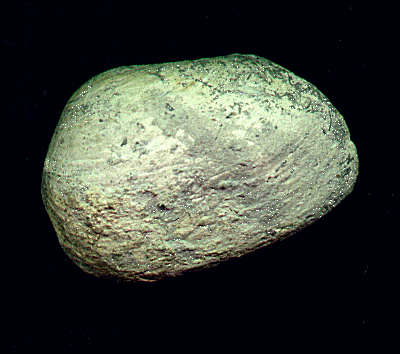
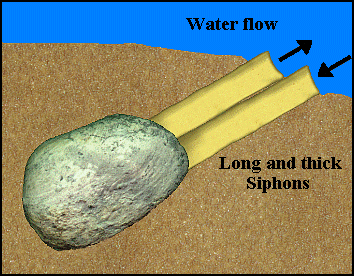
These bivalves burrowed into the sand or mud of the seabed. The two valves are shortned at the front ( anterior end ) and show a conspicuous gape at the posterior. Through this opening the creature passed the siphons for respiration and feeding. This image is a reconstruction of how the animal would have looked in life.
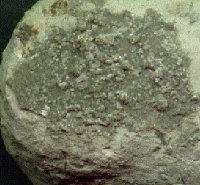
The creature seems to have secreted a mucous layer on the surface of the valves to trap gritty particles. This may have served like the knobbles on the shell of Trigonia to aid its burrowing in soft sand or could have acted like sandpaper to cut through soft rock. This image is from another less well preserved specimen but it does show the gritty coating.
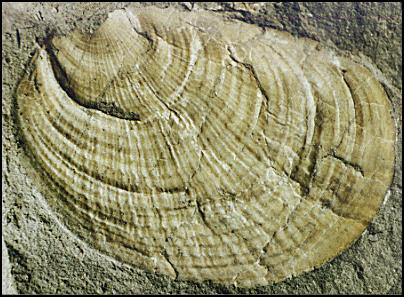
The specimens above come from Lyme Regis but I found this one, squashed flat between layers of shale, on the Jurassic beach at Cromarty.

Trigonia
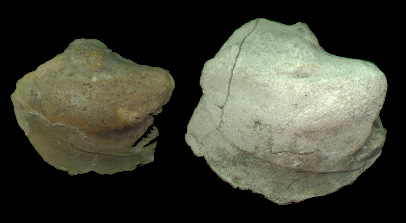
These are two specimens of internal moulds of the bivalve Trigonia. The actual shell has been disloved leaving only the impression of the interior. The muscle scars, the pallial line and the dentition are well preserved. They come from the Jurassic limestone of Portland. I was only able to find a small portion of the exterior of the shell which is shown below:
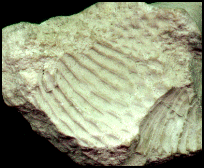
The knobbly bits on the surface of the shell have been shown to improve its ability to burrow into soft sediment. Although not as spectacular as the rediscovery of the Coelacanth, Trigonia was thought to be extinct until 1802 when Neotrigonia, the sole survivor was found alive and well, living in the warm seas round Australia.

Pecten
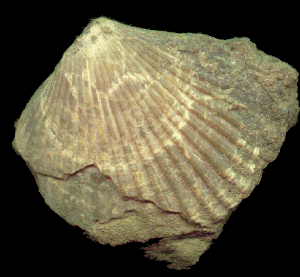
Pecten is a fairly common genus occuring from the Jurassic and still surviving today. Pecten usually led a sedentary life, resting on the sea floor, lying on the right valve and filtering food through the slightly open valves. They could evade preditors by rapidly clapping the valves together ejecting water from the gill slits. By this method they could travel quite swiftly through the water. This specimen comes from Helmsdale, just to the north of Brora. As with many specimens found at this locality the preservation is good but the item is incomplete. (size 3cm)

Eocene Mussel Bed

This is a piece of the large expanse of mussel beds that are exposed on the east coast of the Isle Of Wight. They are from the Eocene Bembridge beds. The creatures were living so close together that the shells have become distorted making identification difficult. The images below are of specimens I extracted from one of the shelly masses.
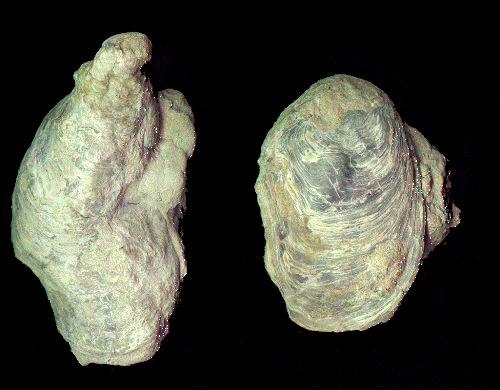
These are most likely "Ostrea" but I have not been able to identify the particular species. (size 3 - 4 cm)

Teredo, the Ship-Worm
Teredo, the ship-worm, is not, as this name suggests, a worm but a bivalve. The larvae attaches itself to a piece of wood and proceeds to burrow into it using the two small valves to drive the burrow along the grain of the wood. As the burrow lenghtens so does the wormlike body for the siphons remain at the entrance of the burrow.
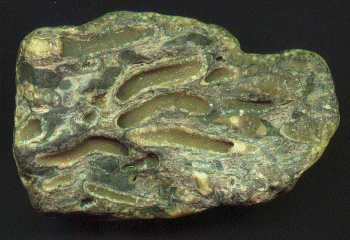
This is a piece of fossilised wood that has been infested by Teredo. It is from the Eocene and was found at Sheppy. (size 7cm)



 Gryphaea
Gryphaea
 Pholadomya
Pholadomya
 Trigonia
Trigonia
 Pecten
Pecten
 Eocene Mussel Bed
Eocene Mussel Bed
 Teredo the Ship-Worm
Teredo the Ship-Worm



 You usually find just the left valve (the curly bit) without the lid (right valve). I was really pleased to find one of the right valves. In most cases Bivalves have similarly shaped valves but Gryphaea has one valve much smaller than the other. Another bonus! This specimen also has the marks of a serpulid worm which encrusted the shell.
You usually find just the left valve (the curly bit) without the lid (right valve). I was really pleased to find one of the right valves. In most cases Bivalves have similarly shaped valves but Gryphaea has one valve much smaller than the other. Another bonus! This specimen also has the marks of a serpulid worm which encrusted the shell. 














